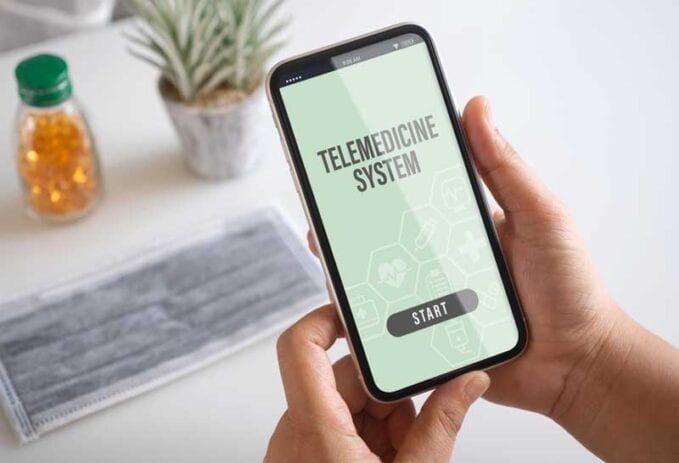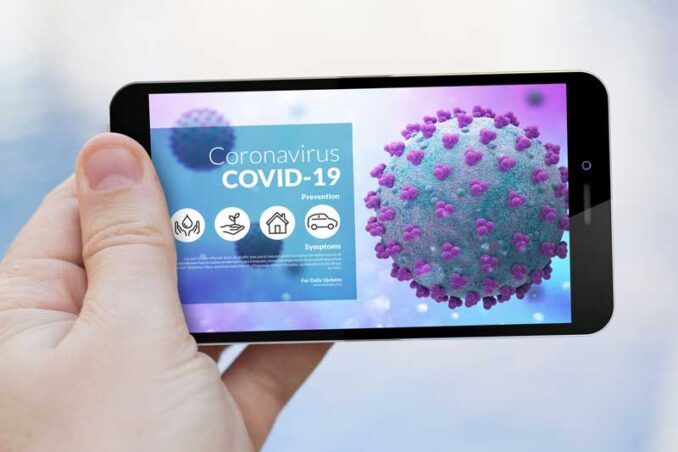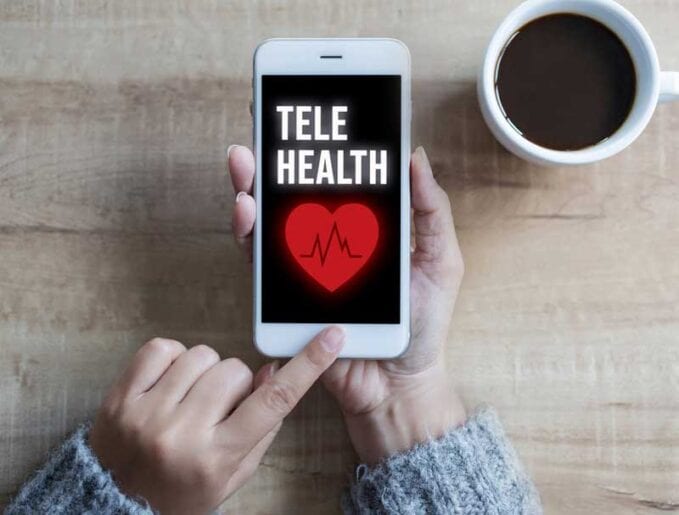Looking for Expert-Level VA Claim Answers?📱Call Us Now! 737-295-2226
Leading telehealth companies have helped many Veterans transition to using telemedicine.
Much like the evolution of the commerce industry; where at one time we were only able to shop in-person at the grocery store, we can now have our groceries & packages delivered right to our doorsteps, all with just a couple taps of our finger.
Telehealth is following commerce’s footsteps & is currently experiencing its own revolution through massive technological innovation.
Telehealth brings doctors and service providers into our homes. Virtually, that is, through telemedicine or telehealth.
Believe it or not, telemedicine and telehealth are not the same thing!
Telemedicine specifically refers to virtual or remote clinical services with your providers.
Telehealth has a broader definition and can refer to any services, meetings or education that are provided as part of remote healthcare services at-large.
- What is Telehealth?
- What do you need to know about telehealth benefits for Veterans?
- How the Leading Telehealth Companies are Meeting COVID-19-related Needs for Veterans?
- Are the Leading Telehealth Companies Practical and User-Friendly?
- VA Telehealth helps 97-Year-Old Veteran hear again
- VA Telehealth Services
- How Much Does Telehealth Cost?
- VA Claims Insider’s Picks for Top 5 Leading Telehealth Companies
- TAKE-HOME MESSAGE
What is Telehealth?

Since 2019, there has been a markedly steep rise in both interest and use of telehealth services. But what are possible telehealth benefits for Veterans, and why this is happening?
Telehealth has been around since the 1960s according to Vera Gruessner. The inception of telehealth began with the NASA.

Since then, many regulatory, financial, and technical barriers have complicated a broader roll-out for the general public. For instance, technological challenges included the unavailability of broadband infrastructure.
Fortunately, to circumvent this, in 2010 the Obama administration proposed The National Broadband Plan.
The objective was “to assist in the proliferation and improvement of broadband networks across the United States.”
Consequently, medical networks have been able to better facilitate remote patient monitoring, implement electronic health records, and other peripheral technologies necessary to deliver health services efficiently.
| Reasons for Decline in In-person Visits | Percentage of Use |
|---|---|
| Delayed or avoided seeking care during the pandemic because of concerns about COVID-19 | 41%–42% |
| Avoided seeking urgent or emergency care | 12% |
pandemic in the United States (January–March 2020).
The rise in the use of telehealth may be associated with these declines in in-person visits. This has led to several telehealth benefits for Veterans and the leading telehealth companies alike.
The outlook for telehealth benefits for Veterans is bright.
According to recent McKinsey estimates, approximately 20 percent, over $250 B, of all Medicare, Medicaid and commercial outpatient, office and home health spending could be virtualized.
Leading telehealth companies will continue to grow as the need for remote health care grows.
What do you need to know about telehealth benefits for Veterans?

There are valuable telemedicine resources and leading telehealth companies available to Veterans, including the more recent Veteran’s E-Health and Telemedicine Support Act of 2017.
This act expands the number, type and location of licensed healthcare providers accessible to Veterans beyond the VA’s scope.
Additional legislation includes insurance coverage for telehealth services.
A thorough reading of this act reveals its original purpose:
…to ensure that Veterans with barriers to accessing health services – such as living rural areas or generally living farther away from health care resources, lacking transportation, dealing with a limited number of specialists, social isolation or financial constraints – could still access care.
Veteran’s E-Health and Telemedicine Support Act of 2017.
This statement serves as evidence of the Veterans Health Administration’s primary goal, which involves ensuring that health care is accessible regardless of where the Veteran patient resides.
Evidence of uptake by US Veterans in 2016 found that VA providers cared for over 700,000 Vets across 2 million episodes of care via telemedicine.
This figure accounts for approximately 12 percent of the VA’s total patient population.

Additionally, Veterans who have capitalized on the VA telemedicine programs tend to have better outcomes and fewer hospital admissions.
One could argue that the Veterans Health Administration telemedicine programs have increased the precision of health services available for Veterans.
The benefits for Veterans and the potential for growth among the leading telehealth companies are clear.
How the Leading Telehealth Companies are Meeting COVID-19-related Needs for Veterans?

According to the US Department of Veterans Affairs Office of Public and Intergovernmental Affairs, telehealth use has increased in recent months over 12-fold.
Specifically, Veteran telehealth appointments increased from 10,000 to 120,000 between February and May 2020.
Through the system VA Connect, one can connect to health care providers via any computer, tablet, or mobile device that has access to the internet.
One of the reasons why telehealth is so useful is that various specialty visits are possible. There are currently over 50 different specialties available via telehealth, including primary care and mental health.
Concerning disparities, telehealth can exacerbate or reduce them. Given the evidence of more positive outcomes overall, the benefits that the leading telehealth companies provide for Veterans are important during the pandemic.
Are the Leading Telehealth Companies Practical and User-Friendly?

Yes, and Yes!
Take Mrs. H., a 97-year-old Veteran, for example. She utilized telehealth benefits for Veterans and received outstanding care through the VA Telehealth program.
She was formerly hard of hearing and mobility restricted.
However, by connecting Mrs. H. to the Key West VA Clinic, Mrs. H. regained her hearing and a greater sense of independence.
VA Telehealth helps 97-Year-Old Veteran hear again
According to one of her health care providers, she would not have been able to make the trips necessary. Telehealth was instrumental in bridging the long-distance gap, once again illustrating telehealth benefits for Veterans.
With the aging population, more patients spend entire days meeting with several different healthcare specialists, which is no different for Veterans.
With telehealth technology, multiple providers can be seen from home, using any mobile device or computer.
VA Telehealth Services

As the most extensive health care system in the United States, the VAMC leverages its connectivity to deliver VA Telehealth Services and the accompanying telehealth benefits for Veterans.
The VA Telehealth Service is a broad array of options, generally equivalent to current private telehealth market products.
With so many new terms for Veterans to navigate, we categorized telehealth products into two categories:
- Synchronous (a.k.a. “virtual,” or “real-time” patient to provider communication)
- Asynchronous (“one-way” communication, i.e., email or patient portal)
The VA offers two synchronous products:
- Clinical Video Telehealth (CVT)
- Home Telehealth (HT)
and one asynchronous product:
- Store-and-Forward Telehealth (SFT)
CVT connects patients in the clinic or at home with providers at another location.
HT includes case management, which coordinates appointments and ensures continuity of care. The added benefit HT includes in-home monitoring for Veterans at risk for placement in long-term care facilities.

SFT is what many patients already use to send a message to their providers, such as email, or patient portals, and includes other technologies used by providers at various clinical specialties.
What makes the SFT different from other patient portals is the VA’s national interconnected EHR system, which streamlines communication between providers critical to expediting patient care.
How Much Does Telehealth Cost?

In general, the leading telehealth companies cost less than in-person visits, according to the Kaiser Family Foundation. A telehealth visit costs about $79 compared to $146 for an in-person visit, accounting for the cost of living and locally negotiated reimbursement rates.
The visit’s purpose dictates how much it will cost; examples include erectile dysfunction and birth control.
For some telehealth providers, the service’s cost is less than average; however, the telehealth provider also dispenses the prescribed medication, which is an additional cost.
It is important to note that paying cash for a telehealth visit is an option; some providers do not require insurance.
VA Claims Insider’s Picks for Top 5 Leading Telehealth Companies
There are over twenty-five different telehealth providers to choose from.
The key to choosing one that suits your needs should be based on personal preferences and other factors that you deem important.
Here’s VA Claims Insider’s top 5 choices.
#1: TELEMEDICA

Telemedica is the #1 most trusted telehealth platform for Veterans and at the top of the list of VACI-recommended leading telehealth companies.
They serve Veterans by providing remote access to high-quality, independent medical providers who are seeking to apply for, or receive, VA disability benefits. This includes disability examinations, medical nexus letters, disability benefit reports and independent psychological evaluations.
Telemedica helps Veterans obtain the relevant medical evidence needed for the VA to approve the benefits they deserve. There are 17 conditions such as erectile dysfunction, gastroesophageal reflux disease (GERD), headaches and lumbago that Telemedica’s providers can diagnose, as early as the first time a Veteran uses the service.
In case there aren’t enough telehealth benefits for Veterans already, members of VA Claims Insider receive special pricing for Telemedica services related to filing VA Claims.
#2: TELEDOC HEALTH

Teledoc Health is a market disruptor and multinational telemedicine and virtual healthcare company. With 40+ million members, they are one of the most well-known leading telehealth companies.
Teledoc aims to be “the right care when you need it most” and offers healthcare services 24 hours a day, 7 days a week.
They offer a variety of services including everyday care, dermatology, and nutrition services. Their goal is to empower everyone to live their healthiest life.
#3: HEYDOCTOR

One of the many providers that accept cash for services, without involving insurance, is ‘HeyDoctor’. The benefit of choosing this provider is that advice can be given in addition to prescriptions and labs.
With HeyDoctor, you can even get prescriptions by mail.
#4: K HEALTH

If you need to utilize telehealth services regularly, K Health allows you to join for $9 per month with unlimited health care provider access.
A vital feature of the K Health app, which can be downloaded from the App Store or through Google Play Store, allows patients to compare symptoms with others to see how others are being treated.
#5: DOCTOR ON DEMAND

If you can appreciate a provider covered by Medicare Part B, Doctor On Demand is perfect. Their health care providers are also available 24 hours, 7 days a week.
Doctor On Demand offers urgent care, behavioral health, preventive health and chronic care. The list goes on. A convenient place to check out these and other providers is at GoodRx or VA Telehealth Services.
TAKE-HOME MESSAGE
The world has been devastated by COVID-19, but there is hope and there is help for America’s Vets through utilizing of the leading telehealth companies and building community through organizations like VA Claims Insider and Telemedica.
Now more than ever, Veterans can experience greater access to medical treatment via telemedicine, only a mobile device away.
The purpose of this article is to provide the reader with information to make health care related decisions as a Veteran. This information is for educational purposes and may not be considered clinical advice.
Deserve a HIGHER VA Rating?
Learn more about how VA Claims Insider can help you get the rating you DESERVE!
Book a no-obligation Discovery Call today!

Matt Helmkamp
Matt Helmkamp spent ten years as an active duty United States Marine, all of which as law enforcement. Starting a Military Police Officer, Matt moved on to join the Special Reaction Team and spent the remainder of his career as a Detective in the Criminal Investigation Division.
While active duty, Matt earned his Bachelors in Homeland Security and Emergency Management and later completed his M.B.A. with a specialization in Public Administration. After receiving an honorable discharge in 2017, Matt joined the State Police as an Intelligence Analyst. Matt is also a disabled Veteran with a rating of over 50%.



